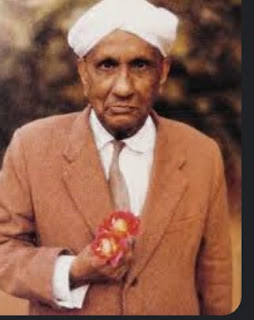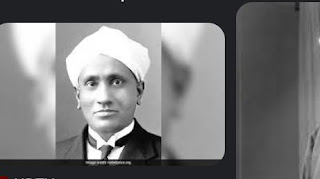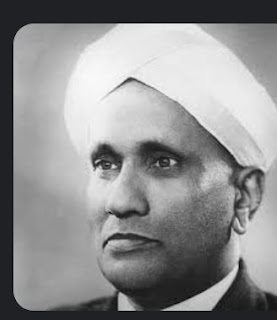The biography of Chandrasenkatra Venkata Raman BIOGRAPHY, AGE, FORMATIONAL LIFE, JOURNAL, AND STYLE
C.V. Raman, also referred to as Chandrasekhara Venkata Raman, was an Indian scientist and Nobel laureate. Born in Trichy, Tamil Nadu, on November 7, 1888, Raman made major contributions to the area of optics and gained recognition across the globe for his research on the Raman Effect, or the scattering of light. In 1930, he became the first Indian to win the Nobel Prize in Physics, therefore establishing India as a major player in world science.
CHILDHOOD AND EDUCATION
His father was a math and physics instructor, and he was born into a middle-class Brahmin household. Raman had a strong interest in science from an early age and had remarkable aptitude in physics and maths. After completing his elementary education at neighborhood schools, he attended the Presidency College in Madras, which is now Chennai, to pursue his bachelor's degree. Chennai).
In 1907, after earning his bachelor's degree, Raman enrolled at Calcutta University to pursue a master's degree in physics. Raman studied with great dedication and produced ground-breaking research on diffraction, vibrations, and acoustics under the mentorship of the distinguished physicist A. L. Ghosh. With the highest honors for his master's thesis on light diffraction, Raman demonstrated that he had a bright future in research.
ADVANCED CAREER POSSIBLE AND ACHIEVEMENTS
Following graduation, Raman started working for the Indian Finance Department as an assistant accountant general. But his love of physics quickly drove him to quit his administrative position and, in 1907, he moved to Calcutta to become a member of the Indian Association for the Cultivation of Science (IACS). This is when Raman started concentrating on his optical and light scattering research, which would later win him international acclaim.
Raman discovered something crucial in 1928 that is now referred to as the "Raman Effect." Raman discovered a novel phenomenon in which molecules strayed from specified wavelengths when light was dispersed. Raman achieved this through meticulous testing and a deep understanding of physics
When Raman discovered what is now known as the "Raman Effect" in 1928, his career took a dramatic turn. Raman discovered a novel phenomena in light scattering, which included molecules deviating from specific wavelengths. Raman was able to explain the occurrence using a hypothesis of molecular structure through painstaking testing and a thorough understanding of physics. His research produced the ground-breaking Raman spectroscopy, a tool for chemical investigation that transformed the area of optics.
Raman's significant contributions didn't stop at optics and light scattering. He also conducted extensive research on the acoustics of musical instruments and the physiology of human hearing. His experiments with musical instruments allowed him to understand the complex interplay between physics and music, contributing to the quality and design of various instruments. He also conducted pioneering research on the physiology of hearing, which opened new possibilities for understanding hearing impairments and developing better solutions.
Acknowledgment and successes
As the first Indian to win the coveted Nobel Prize in Physics, Raman was recognized in 1930 for his discovery of the Raman Effect. He was recognized as a scientific genius by the Raman Effect, which also elevated India's stature in the world scientific community. Many more distinctions and awards, such as India's highest civilian award, the Bharat Ratna, were bestowed upon Raman in 1954 for his pioneering research.
HERITAGE AND IMPACT
The contributions made by C.V. Raman to science extended beyond his particular findings. He was instrumental in the establishment of scientific institutes and the advancement of scientific research in India. Raman advanced his goal of building a robust scientific infrastructure at the Indian Institute of Science in Bangalore after becoming the first Indian director of the institution in 1947, the year of India's independence.
Raman's work inspired generations of Indian scientists, and his legacy remains alive today. The Raman Research Institute in Bangalore, established in his honor in 1948, carries forward his vision of cutting-edge research and innovation. Raman's work on optics and light scattering continues to shape various scientific disciplines, and Raman spectroscopy has found applications in fields such as chemistry, biology, and materials science.
In a recap
Science is a powerful field, and C.V. Raman's life and work are prime examples of its force. His ascent from modest origins to the status of one of the world's most renowned scientists has left a lasting impression on science. Beyond improving our knowledge of light and molecular structure, Raman's discoveries and contributions also served as an inspiration for a new generation of Indian and foreign scientists. Prospective scientists throughout the world find inspiration in his unshakable dedication to scientific inquiry and his ceaseless quest for knowledge.












0 Comments